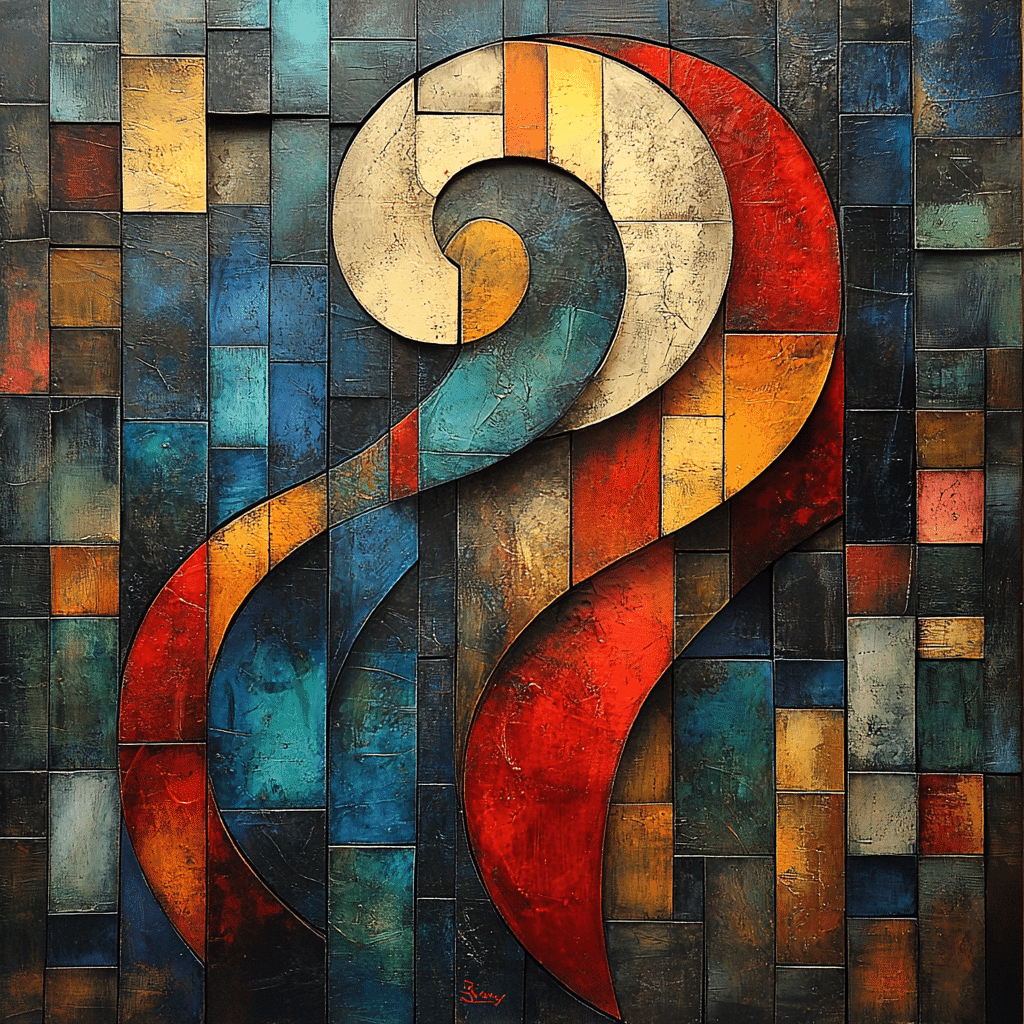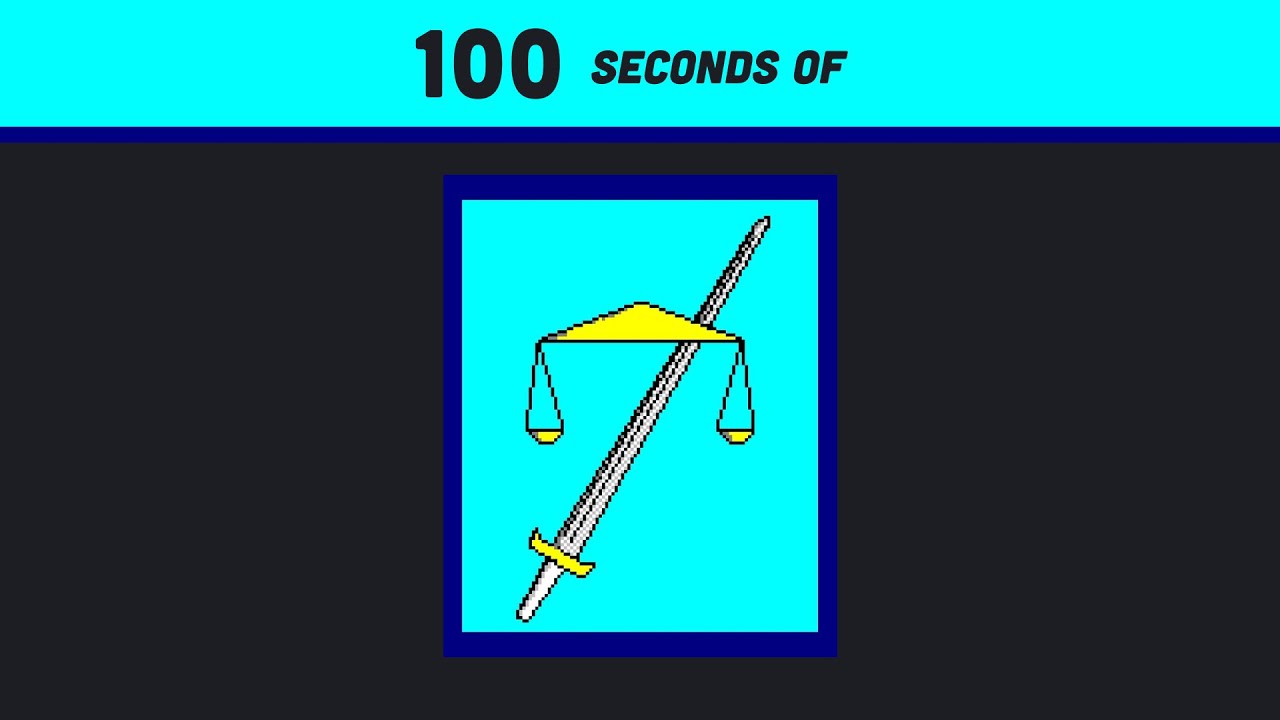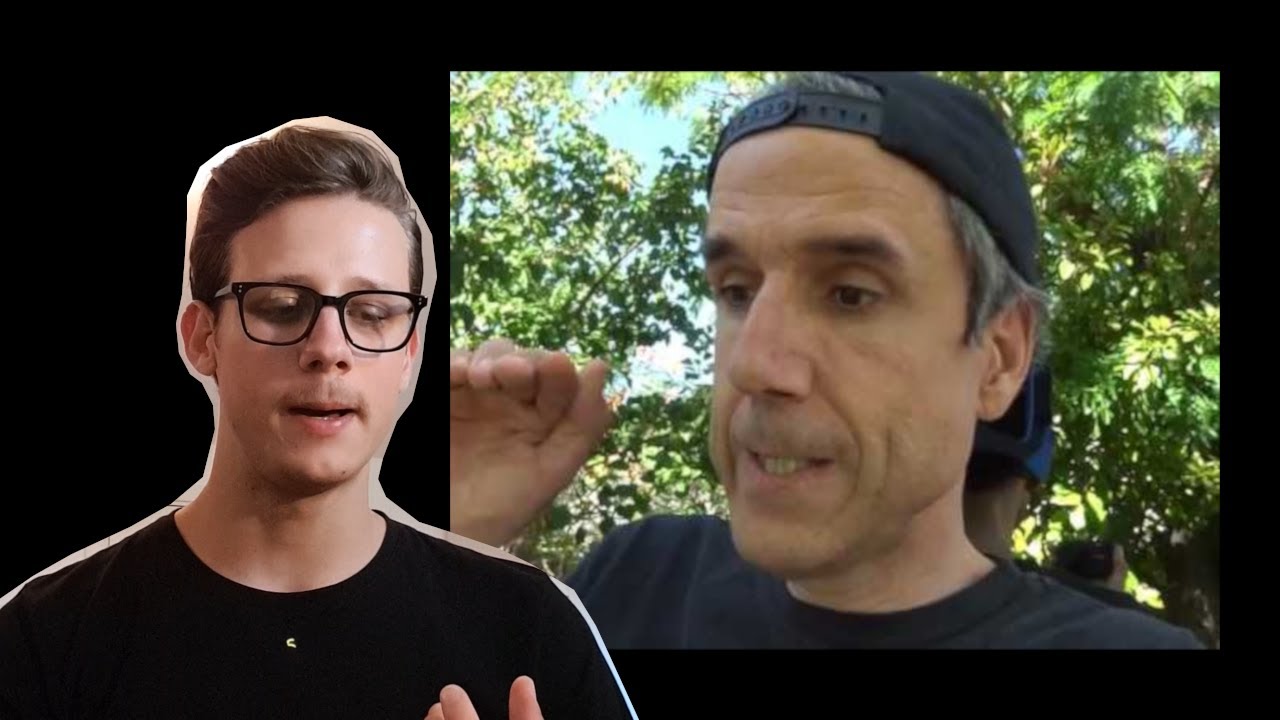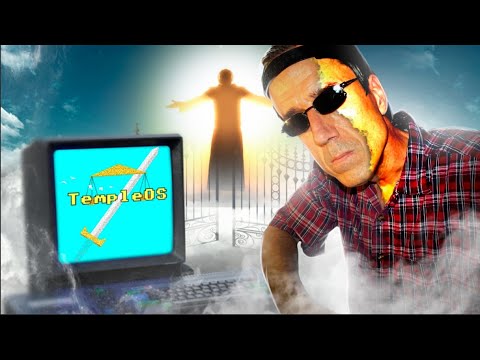
Terry Davis The Controversial Mind Behind Templeos
Terry Davis, a name that evokes a mix of admiration and controversy, has cemented his place in programming history with the creation of TempleOS. Born in 1969, Davis’s life story is one of profound genius intertwined with personal struggles. His journey from a conventional software engineer to the creator of a biblical operating system reflects a unique vision that continues to spark debate in tech and indie art communities. This article aims to explore the multifaceted legacy of Terry Davis, highlighting why TempleOS remains such a polarizing topic.
7 Compelling Insights Into Terry Davis’s Legacy

1. The Genesis of TempleOS: A Personal Journey
Terry Davis began work on TempleOS after a devastating mental health crisis. This challenging period, he believed, was marked by divine revelation urging him to create an innovative operating system. While most tech developers aim for utility, Davis sought to build what he depicted as the Third Temple prophesied in the Bible. This deeply personal motivation set TempleOS apart, adding an almost spiritual aspect to its design and user experience.
Davis’s religious zeal culminated in the operating system’s features, intertwining programming with his Christian convictions. He often described TempleOS as a vehicle for communicating with God, a tool to explore his faith through coding. This connection to spirituality kept the project at a niche vantage point, distinguishing it from mainstream operating systems but simultaneously alienating some potential users who found the religious overtones perplexing.
As the tech crises escalated, Davis’s claims grew more pronounced. He often spoke about perceived threats from the CIA, portraying himself as a misunderstood genius plagued by paranoia. This fascinating yet unsettling angle adds to the lore surrounding Terry Davis, highlighting the thin line he walked between innovation and isolation.
2. Innovative Programming: Language and Design
TempleOS features a programming language known as HolyC, which uniquely combines elements of C and Forth. HolyC’s design is emblematic of Davis’s distinctive approach to software development, creating an environment where users could program with surprising ease while grappling with a plethora of specialized functions. This language represents not just a tool, but a bridge between the developer’s intention and execution.
What sets HolyC apart is not just its syntax but its interactive nature. By inviting users into its creation, Davis fostered a community that appreciated coding in this ‘holy’ environment. However, this level of engagement seemed daunting to those accustomed to conventional programming languages, creating a divide between those who embraced the journey and those who dismissed it.
Davis’s idiosyncratic methods often led him to ignore trends of mainstream tech. He harkened back to principles where functional design met creative expression, making TempleOS an extraordinary case of individualism in a field often driven by consumer trends.
3. Wade Wilson: The Dark Yet Humorous Comparison
When contemplating the life of Terry Davis, one can’t help but draw parallels to characters like Wade Wilson, otherwise known as Deadpool. Much like Wade, Terry exhibited a marvelous blend of brilliance and erratic behavior, swinging from moments of astounding insight to unsettling outbursts. This rollercoaster of mental states adds layers to Davis’s story, making it both exhilarating and tragic.
The candidness with which Davis discussed his mental health reflects broader issues we see in storytelling, mirroring the complexity of Wade’s character in comic narratives. This interplay of humor and darkness in both narratives captivates audiences, presenting flawed heroes facing demons both internal and external. Terry’s journey encourages empathy and understanding rather than mere judgment.
This comparison also allows us to understand the cultural impact of Davis’s work through a lens that combines tech and art, emphasizing how personal struggles often fuel profound creativity. The conversations surrounding mental health are crucial, as they remind us that every creative endeavor often carries the heavy weight of the creator’s experiences.
4. Public Image and Online Persona
Terry Davis cultivated a distinct online persona that became central to his identity. His eccentricities, from his unfiltered opinions to his candid takes on technology, attracted a cult following. This digital reputation, while endearing to many, often crossed lines into controversy—especially when he made incendiary comments that included racist and homophobic slurs.
The duality of Davis’s online presence resembles the chaotic narrative of Wade Wilson. While some fans celebrated his unconventional insights, others recoiled at the intensity of his rhetoric. His erratic behavior and tumultuous presence led to a fluctuating perception: one moment, he was a beloved pioneer; the next, he was a figure of disdain.
This public image created a paradox; it provided a platform for engagement with his work while simultaneously alienating many within the tech community. The extreme opinions surrounding Terry Davis underscore the complex relationship between genius and madness, a topic that deserves reflection both in tech circles and beyond.
5. The Technical Acclaim of TempleOS
Despite its niche appeal, TempleOS has garnered a chorus of praise from enthusiastic programmers. The operating system’s architecture offers a remarkable simplicity, combined with a robust integrated development environment that has led some to liken it to pioneering systems like Linux. Its distinctive functionality resonates with those who appreciate innovation outside of the typical corporate framework.
Users often find themselves drawn to TempleOS not just for its technical capabilities but for the experience of engaging with a coding environment so deeply tied to its creator’s ethos. In many ways, it’s a testament to how individuality can foster creativity in programming culture.
Yet, the limitations Davis imposed upon TempleOS resonate with a broader commentary on the tech industry. By intentionally isolating his operating system from mainstream trends, Davis posed a challenge to developers: does innovation lie solely in pursuing profitability, or can it emerge from deeply personal inspiration that may defy business logic?
6. Mental Health Awareness: A Cautionary Tale
Terry Davis’s struggles with mental health invite crucial conversations surrounding vulnerability within the tech community. His experiences reflect the stark realities faced by many in high-pressure environments, where innovation often wrestles with mental wellness. Davis’s journey paints a sobering picture of the need for advocacy and understanding as tech giants rally for a more supportive atmosphere.
His candid disclosures about his battles with paranoia and delusions highlight the urgent need for mental health resources in the tech sector. Acknowledging this reality strengthens the narrative around innovators who often walk precariously along the line between brilliance and instability.
The unfortunate stigmas attached to mental illness often suppress open dialogue, reinforcing barriers that further isolate those in similar situations. If Davis’s story teaches us anything, it’s the importance of community and acceptance, urging a collective push toward growth and understanding.
7. Cultural Impact and Future Perspectives
Although TempleOS occupies a niche in the programming landscape, its influence is steadily growing among indie developers. The conversations that arise from discussions about Terry Davis weave their way into narratives about individuality and creativity within tech. These debates underscore the ongoing struggle to balance unconventional innovation with the demands for mainstream acceptance.
Davis’s legacy has evolved into a symbol of both triumph and tragedy that resonates within indie arts and technology circles alike. The sheer audacity of his vision invites creators to ponder their journeys, embracing imperfection as part of the artistic process.
As future generations of developers explore the intersection of tech and personal expression, the story of Terry Davis will remain a poignant reminder that every creator’s path is worth unraveling, embracing the complexities that come with artistry. The nuance of his narrative is a testament that innovation often emerges from the most unpredictable places.

The Duality of Genius and Madness
Terry Davis embodies the duality found in the realms of creativity and technology. The stark contrasts entrenched in his life mirror the stories of many artists and innovators who grapple with their genius and tumultuous experiences. Just like Wade Wilson, the overarching narrative surrounding Davis blurs the lines between admiration and concern, leaving many questioning how we define success and creativity in the face of personal turmoil.
Ultimately, the legacy of Terry Davis serves not just as a narrative within software development but as a broader discussion about mental health, innovation, and the complexities creatives face. As we dive deeper into these interconnected threads, let his story remind us that brilliance often unfolds alongside challenges and that every creator’s journey deserves recognition for its singular contributions to the tapestry of technology and art.
Terry Davis: The Controversial Mind Behind TempleOS
Terry Davis was a fascinating figure who made waves in the world of programming and indie development. One fun fact about Davis is that he claimed TempleOS was a divine creation, and he frequently referred to himself as the prophet of this unique operating system. This self-proclaimed title adds a layer of mystery and controversy around his life and work—much like how fans might intensely debate plot developments in Attack on Titan Seasons. His personality was just as complex as his coding.
Interestingly, Davis had a notable interest in the aesthetics of his operating system. He developed TempleOS with a specific color scheme and sound design that reflected his own artistic vision. This passion for creativity in tech is reminiscent of how some indie filmmakers, like Nathan Parsons, strive to create distinct visual styles—with Davis believing TempleOS was a gift from God. But, it wasn’t just the programming that stirred the pot; his eccentric behavior and outspoken views often led to heated discussions about mental health and creativity in tech.
Trivia lovers might appreciate that Davis’s life after dropping out of college wasn’t devoid of influence—he was often compared to other creative minds like Al Stewart and Randy White, who also faced struggles but managed to channel their experiences into their work. Davis’s uncompromising spirit mirrors that of folks like Daniel Marsh, who, despite challenges, carve out their own paths in the industry. And speaking of challenges, navigating personal strife can sometimes lead to unexpected skill development, such as his distinctive coding style which still has fans intrigued—similar to how many ask,What Is The interest rate on home Loans? when entering the real estate market, always looking for answers that may guide them forward.

Why was Terry Davis controversial?
Terry Davis was controversial due to his erratic behavior and public statements, which included frequent use of offensive slurs. He often claimed to be persecuted by federal agents, particularly the CIA, and his views and language led to significant backlash and heated debates about his work and legacy.
What is TempleOS based on?
TempleOS is based on Davis’ interpretation of biblical themes, specifically designed to represent the Third Temple as prophesied in scripture. He integrated religious elements throughout the operating system, reflecting his spiritual beliefs and visions.
What was Terry Davis famous for?
Terry Davis is famous for creating TempleOS, a unique operating system that blends coding with religious symbolism. He gained attention not just for the OS itself, but also for his unconventional personal beliefs and struggles with mental health.
What is Holy C?
Holy C is the programming language created by Terry Davis and used in TempleOS. It’s known for its simplicity and is specifically tailored for the OS, allowing users to write software that interacts closely with the underlying system.
What kernel does TempleOS use?
TempleOS uses its own kernel, which was crafted by Terry Davis from scratch. This custom kernel is designed to support the specific features and functionalities of TempleOS, setting it apart from more commonly used operating systems.
Is TempleOS safe?
While TempleOS is generally considered safe to use, it lacks many modern security features found in mainstream operating systems. Users should exercise caution if they decide to use it, particularly when connecting to the internet or handling sensitive data.
How many lines of code are in TempleOS?
TempleOS contains about 100,000 lines of code, making it a relatively small operating system by today’s standards. This compactness is part of what allows it to run efficiently, even on older hardware.
Why was Terry v Ohio controversial?
The case of Terry v. Ohio was controversial as it dealt with issues of police authority and the rights of individuals during searches and seizures. The ruling ultimately allowed officers to stop and frisk individuals based on reasonable suspicion, leading to ongoing debates about civil liberties.
What’s reality I don’t know when my bird was looking at my computer monitor I thought that bird has no idea what he’s looking at and yet what does the bird do?
As for the nature of reality and perspective, it’s fascinating to think about how different minds perceive the world. That bird’s lack of understanding about the computer monitor shows how creatures see and interpret their surroundings in their own unique way, even if it seems puzzling to us.
Is TempleOS safe?
TempleOS is considered safe to operate for basic tasks, but users should keep in mind its outdated features and potential security gaps, especially when dealing with online activities or unsecured networks. Always use discretion with any OS that’s not regularly updated.
How many lines of code are in TempleOS?
TempleOS has roughly 100,000 lines of code, reflecting both its minimalist design and Terry Davis’s focused programming approach. This amount allows for a unique blend of functionality and the distinct features of the operating system.












